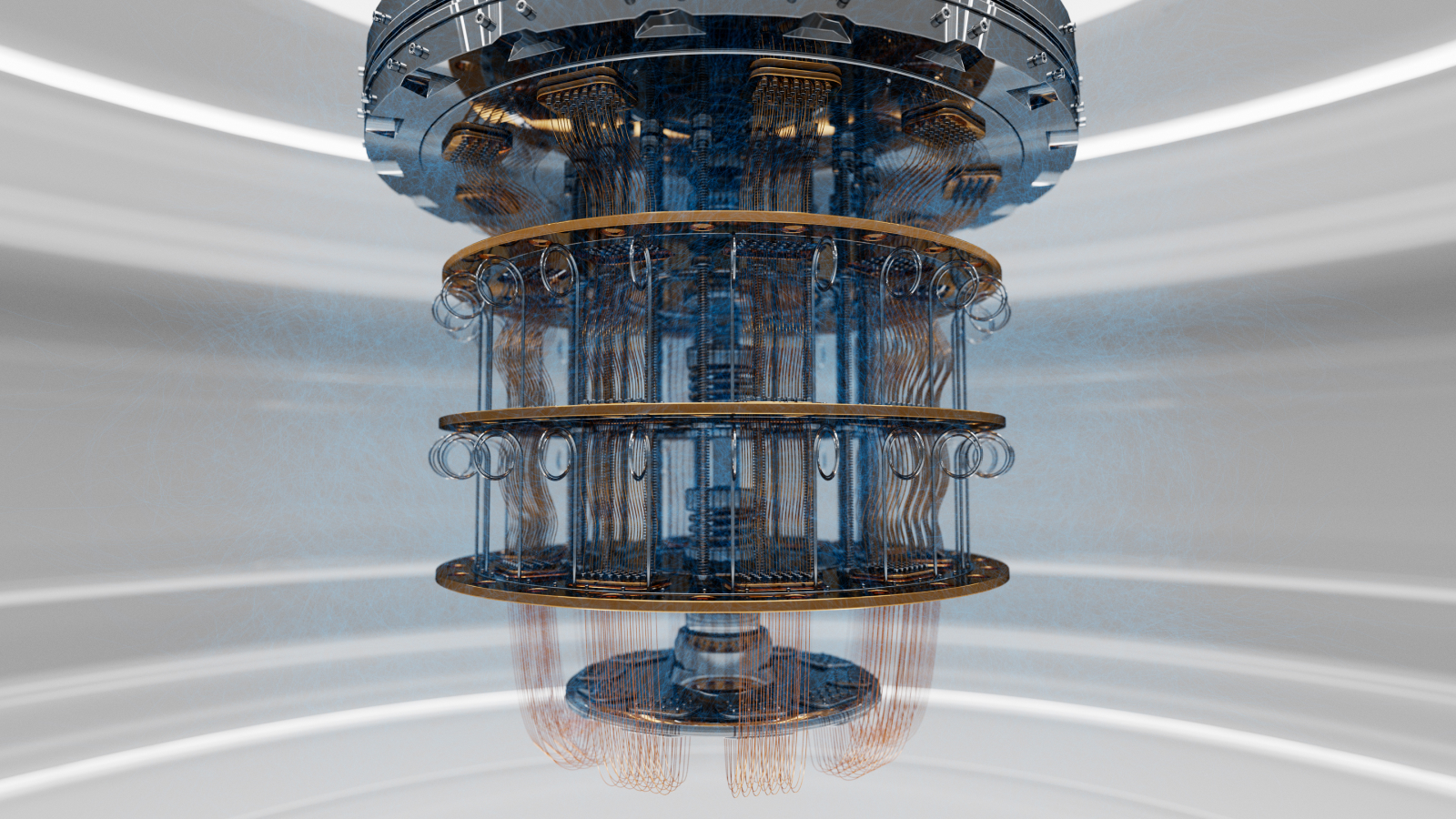
Scientists have created a set of "logical qubits" that have error rates 800 times lower than physical qubits — paving the way for useful, fault-tolerant quantum computers in the near future.
Quantum bits, or qubits, are inherently prone to error — this susceptibility is described as being "noisy." Creating logical qubits is one way of solving this. These are a collection of physical qubits that are tied through quantum entanglement — and they reduce errors by storing the same information in different places. This spreads out the possible points of failure while a calculation is underway.
In a new paper published April 2 to the preprint server arXiv, scientists demonstrated they could perform experiments on four logical qubits made using 30 of the 32 physical qubits in the H2 quantum processor made by Quantinuum, a quantum computing company.
The team, made up of researchers from Quantinuum and Microsoft, ran 14,000 experiments on a basic quantum circuit made up of the logical qubits without generating any errors that weren't detected and corrected.
They hope this technology can be integrated into a future hybrid supercomputer powered by 100 reliable logical qubits — which would be enough to provide organizations with a scientific advantage, Microsoft's EVP for strategic missions and technologies said April 3 in a blog entry.
One of the biggest problems with scaling quantum computers, beyond the hardware required to run them, is the extremely high error rates of qubits. Bits in conventional computing have an error rate of 1 in 1 billion billion.
When running experiments on a quantum circuit, however, physical qubits have an error rate of approximately 1 in 100, according to Microsoft. The new logical qubits, by comparison, have an error rate of just 1 in 100,000.
The researchers achieved this improvement by applying a technique called "active syndrome extraction" to Quantinuum's ion-trap qubits and quantum computing architecture, Quantinuum representatives said in a statement.
This technique involves diagnosing and correcting errors while calculations are underway without destroying logical qubits. Because qubits process calculations while they're in a state of quantum superposition between two binary states (representing the 1 and 0 of computing data), you cannot view them without causing decoherence, in which the superposition collapses.
Active syndrome extraction is a process derived from a paper published in September 2018 and works because of the way this kind of logical qubit was composed. A logical qubit includes a small number of physical qubits — referred to as the ancillary code block — that store no data for calculations, but into which the logical qubit's information is temporarily stored, so it can be seen. By applying this technique, the scientists were able to peek within the block then identify and correct errors as they appeared, without disrupting calculations.
“Breakthroughs in quantum error correction and fault tolerance are important for realizing the long-term value of quantum computing for scientific discovery and energy security," Travis Humble, director of the Quantum Science Center at Oak Ridge National Laboratory, who was not involved in the current research, said in a statement. "Results like these enable continued development of quantum computing systems for research and development.”
Microsoft representatives argue this research represented a shift to what they call "Level 2" quantum computing, in which scientists have low-error quantum hardware that can be scaled up to solve problems reliably. Quantum computers today are, by comparison, described as "noisy intermediate-scale quantum" (NISQ) machines.
The aim is to get to Level 3 machines and to achieve so-called “quantum supremacy” — that is, to reach the point at which quantum computers will be more powerful and capable than the fastest supercomputers.







